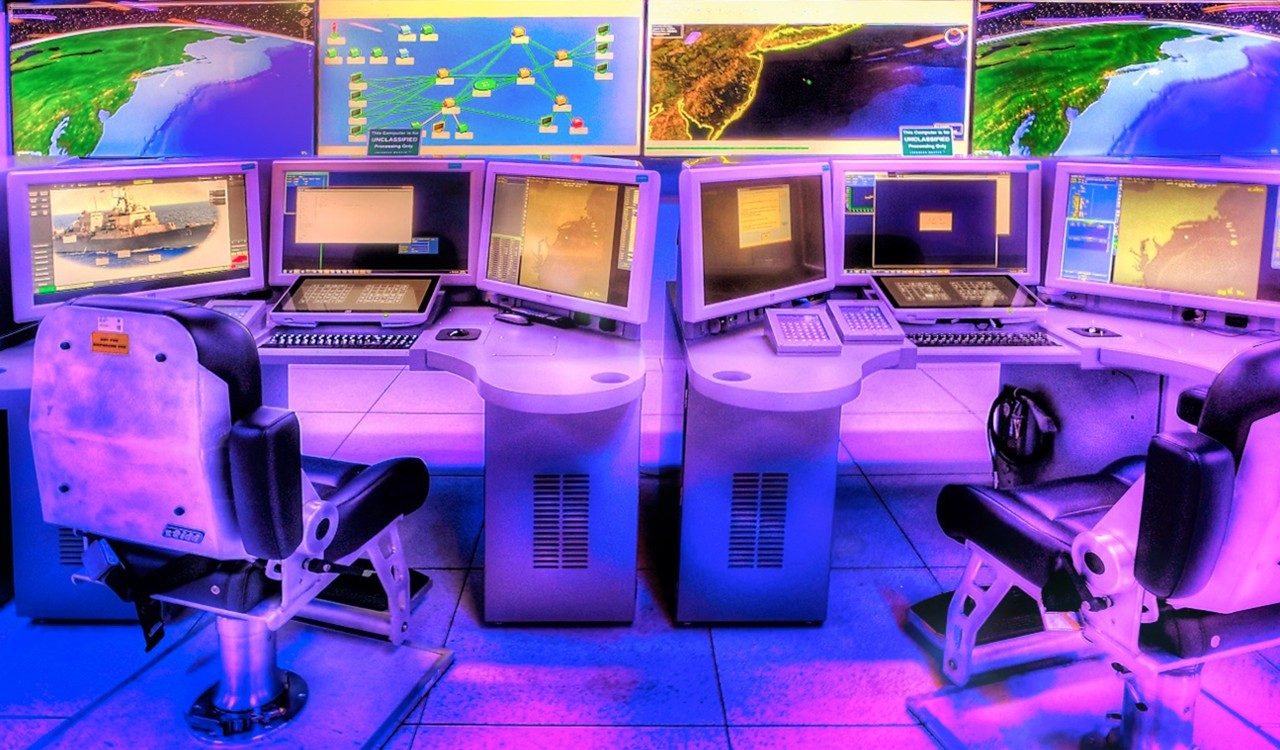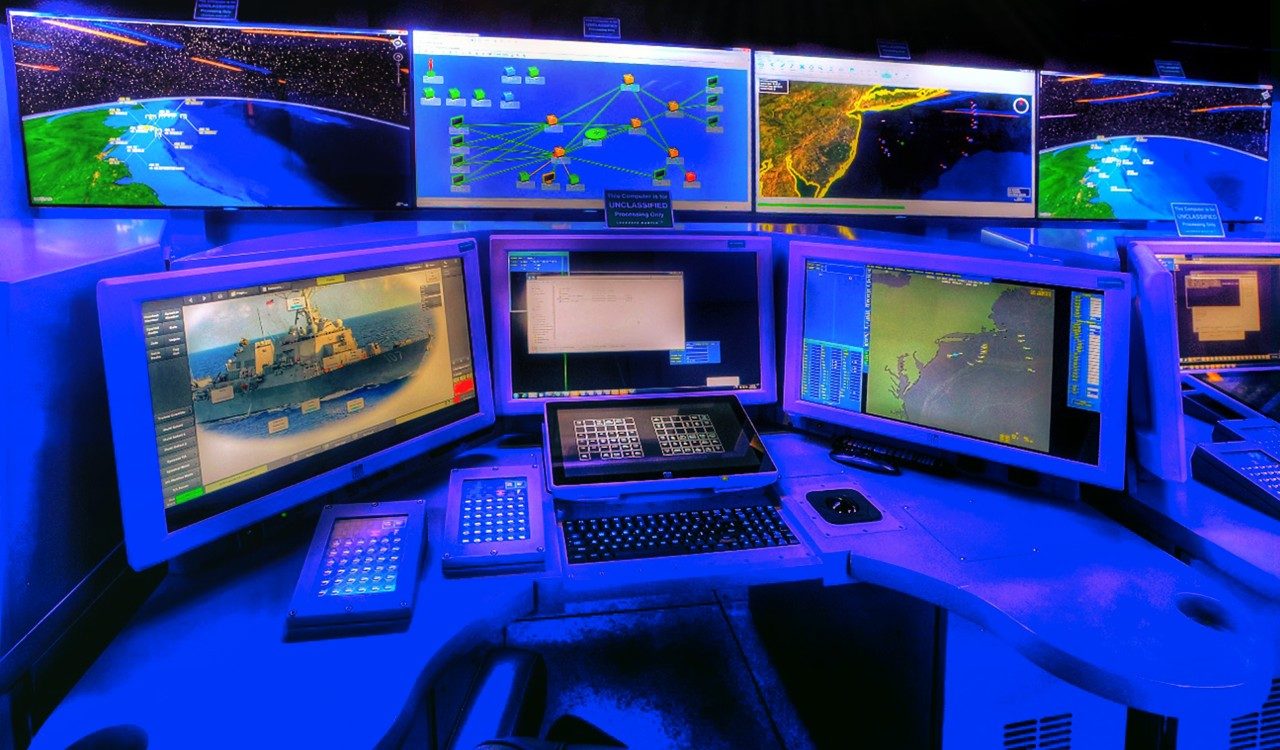The dim lights fluctuate from white, to blue, to red, reflecting various lighting conditions onboard naval vessels. The frosted glass-walls are moveable to enhance workspace productivity and the workstations are exact replicas of consoles on Navy ships, providing realistic conditions for integration and testing. When you walk into the Surface Navy Innovation Center (SNIC) on Lockheed Martin’s Moorestown, New Jersey campus, you may feel as if you’ve walked into the systems room of a U.S. Navy destroyer.
That feeling is by design. The SNIC is a research, development and demonstration facility that brings together industry, government and academia to design the next generation of capabilities the surface fleet needs to combat evolving threats around the world.
“Innovation is value,” says Chris Etgen, SNIC manager. “The true value the SNIC brings is innovation through collaboration across a broad range of research topics. From tactical to sustainment and training applications, from hardware to software development, and from Program-of-Record risk reduction activities to emerging trend research, the SNIC focuses on customer, academia and industry partnership to deliver value to the warfighter.”

The SNIC enables rapid concept exploration and prototyping to immediately deliver emerging technologies and solutions to the Navy. Here are three ways the SNIC is working to support sailors today and in the future:
- Augmented Reality-based Tech Support: You probably have a drawer full of them – instruction manuals for your television, dishwasher and coffee maker. The crew members who maintain ships rely on thousands of pages of documentation to guide them. The SNIC is working on faster, less cumbersome and real-time solutions involving augmented reality that could revolutionize the way sailors maintain ships and get assistance. Instead of flipping through manuals, a sailor could put on a pair of goggles and show someone on shore exactly what is happening to troubleshoot the problem.
- Implementing On-Ship Solutions from the Shore: Imagine, just before a ship leaves port, water damage is discovered in an important systems cabinet. In tight quarters where every inch is used to capacity, removing and replacing a piece of technology is a complicated maneuver. Thanks to Lockheed Martin’s strong relationships with shipyards, the SNIC has a detailed 3-D model inventory of ships. The SNIC used those models to provide the Navy a detailed solution and path to get the cabinet out and a new cabinet in place. This allowed the Navy to save time on planning and instead focus on execution.
- Optimizing Lifecycle Operations: Maintaining a ship is expensive and time-consuming. The SNIC is investing in technologies and partnering with other companies and agencies to optimize how and when maintenance is performed onboard ship. Through enhanced data collection and analytics, condition-based and prognostic-based maintenance systems can drive significant savings into lifecycle operations.





